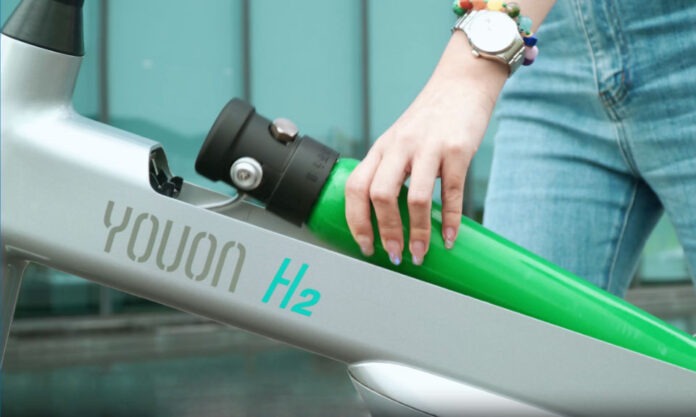National regulations are about to enter effect in China with the aim of promoting the standardised and high-quality development of the hydrogen-bicycle industry. One way or the other, it’s the future of personal urban transport. Time to get up to speed.
The “General Technical Requirements for Hydrogen-Assisted Bicycles” is to be officially implemented on 22 October. Behind it is the industry leader in China, Youon, with the participation of 11 hydrogen-energy research and production companies, as well as testing and certification bodies.
The standards stipulate the overall requirements for hydrogen-assisted bicycles and technical requirements for their fuel cell systems, hydrogen storage devices, test methods, etc., as the Yangtze Evening News reported yesterday, 9 October.
At the same time, a unified-standard system has been established as regards product quality and performance, which is hoped to be instrumental in improving industry competitiveness and sustainable development. The standards are without doubt a significant step toward China achieving its carbon-neutrality goals.
But before rushing out to buy one (and they are on sale now, as this publication reported a year ago), better to be familiar with using the new revolution in personal transportation.
First up, hydrogen-powered bikes are a dream compared to e-bikes. That 10 hour charge time? Forget it. A hydrogen-powered bike takes 10 seconds.
Youon is the first mass-produced consumer-oriented hydrogen bicycle in China, and it’s based in Changzhou of our very own Jiangsu Province.
As to its use, a home hydrogen generator, provided by the manufacturer, fills a cylindrical tank, about as long as your forearm. Plop it in the bike and you’re ready to go. For the technically minded, the generator relies on proton-exchange-membrane (PEM) electrolysis to realise the hydrogen.
And when we come to actually riding the bike, that’s where it gets interesting. In the case of a Youon bike, there are three gears. In first gear, you’re on your own; pedal power all the way. Burn some calories.
Second and third gears are hydrogen-assist modes, demarcated by power. In both gears, acceleration and deceleration are controlled by the pedals. Third gear will realise a top speed of 22 km/h.
While there are so many upsides to hydrogen power, many have their concerns, not least the fact that hydrogen is an extremely dangerous, flammable and explosive gas.
Yet, the quantity of hydrogen required for a bike is not particularly large, while its tank is also different from traditional large-scale hydrogen storage in so far as it relies on lanthanum pentanickel (LaNi5), a rare-earth-element based compound with hydrogen storage capacity.
That hydrogen is also released incredibly slowly, so much so it is said to be nigh-on impossible for it to reach a concentration level in air of 4 percent, the minimum needed for hydrogen to combust.
The periodic table therefore looks as if it shall be instrumental in bringing down emissions, with its most basic element of all playing the leading role in the development of future transportation. And the byproduct of it all? Water.









